
What are anomalies in the key metrics for e-commerce, what impact does anomalous data have on revenue and how can anomaly detection for e-commerce supercharge your digital store?
There’s never been a better time to be in ecommerce.
In 2020, the number of digital shoppers is expected to rise to 2.05 billion – that means one in four people on the globe use online shops (and these statistics are from before the coronavirus crisis supercharged demand for digital shopping).
The convenience of online shopping is an increasingly large draw for customers today. Just take a look at this chart showing the growth in the number of shoppers using e-commerce:
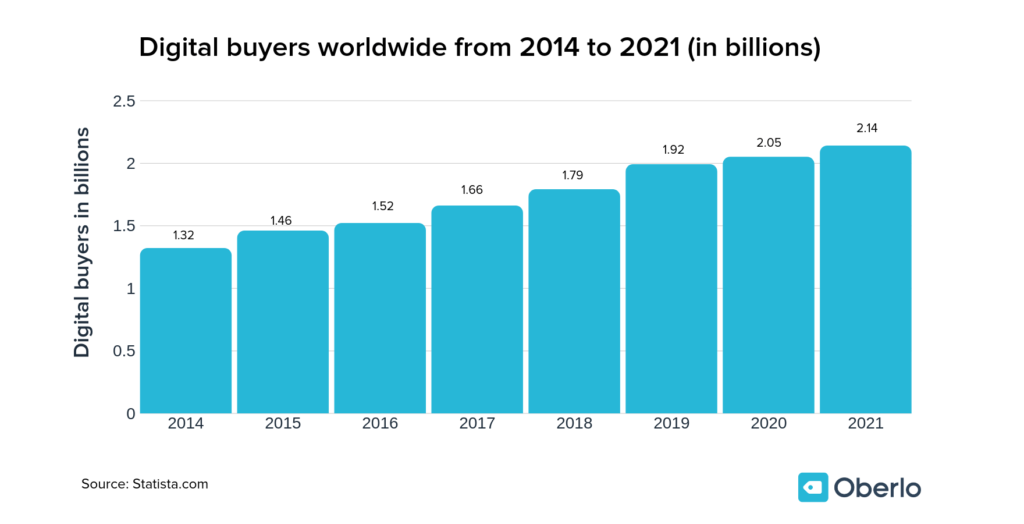
But with intense competition and pressure for seamless user experiences coming from hyper-successful incumbents like Amazon, running an e-commerce company is a complicated business. In order to succeed, your e-commerce venture needs to fill a gap in the market, provide a seamless user experience and draw in repeat and new customers.
To do all of these things effectively, you need to know exactly what’s going on in your e-commerce metrics, KPIs and data, so you can track success and address any underlying issues before they impact your bottom line.
A big part of understanding what’s going on in your e-commerce KPIs and metrics is understanding when they’re behaving in a way they shouldn’t – when there is anomalous data you need to know about. Let’s take a look at what an anomaly is, how they show up in the key metrics for e-commerce and why investing in AI anomaly detection may be the best decision you ever make for your e-commerce business.
What is an anomaly?
An anomaly (also known as an outlier) is when something happens that is outside of the norm, when it stands out or deviates from what is expected.
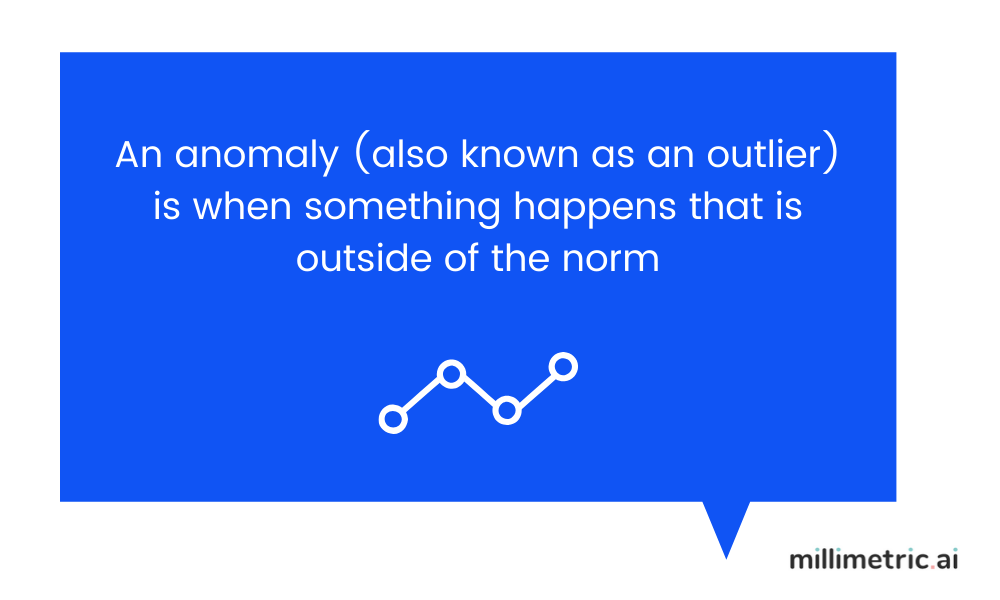
In the business world, anomalies tend to show up in the datasets we use to monitor KPIs and metrics. An anomaly contains insights into underlying business issues that need to be addressed.
What are common anomalies in e-commerce?
E-commerce businesses rely on a (ever-growing) number of dashboards and datasets to stay on top of the various KPIs and metrics that track business performance, and these are where they will find their anomalous data. Let’s take a look at some of the most common – and business critical – anomalies that you might find across the key metrics for e-commerce.
On average, the cart abandonment rate across the globe is 69.7%. This means for every 100 visitors, 69% of visitors will leave the store during the checkout process. Mobile users are most likely to leave the website if they find any issues with payment processing.
Anomalies in your conversion metrics are a common type of anomalous data that appear in e-commerce. They signal revenue-damaging problems which lead to less users actively spending money on your e-commerce webpage.
Conversion anomalies in e-commerce might look like:
The conversion rate of a specific source or medium changing
Reasons for anomalies in your e-commerce conversion rates could be:
- A change in your pricing structure
- Seasonality – holidays like Christmas or Black Friday can have a significant impact on conversion rates
- Technical issues on your site (we’ll cover technical anomalies in a bit)
- A change in the effectiveness of your marketing (again, we’ll look into this shortly)
- Issues with your tracking. If the change seems particularly drastic – say there’s been a 50% decline in conversions, for example – then it’s worth taking a moment to run a quick tracking test
- Your site isn’t properly SEO-optimised, user friendly or attractive to your customer base
- Your site isn’t effectively mobile optimised
- Product images, descriptions or navigation is poor
A change in average order value (AOV)
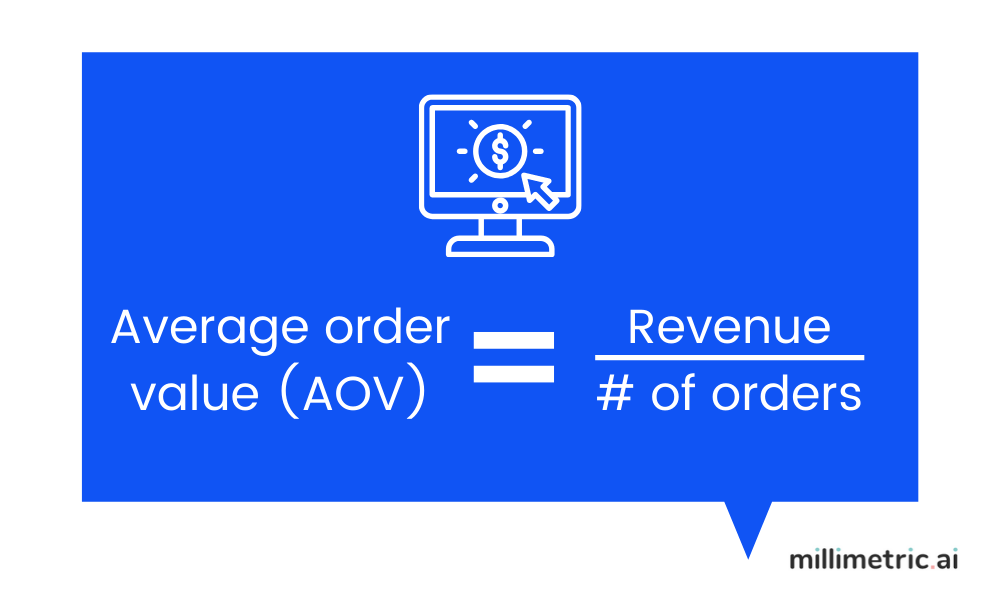
Reasons for anomalies in your AOV could be:
- A promotion or discount you’re currently running has driven down the AOV
- User behaviour changes that need to be drilled down into
- Technical issues or problems with the layout/design of the website that’s putting customers off buying
- A current set of ads or a marketing strategy that’s less or more effective than normal (we’ll touch on digital marketing anomalies later in this article)
Product anomalies
Product anomalies are another type of anomaly that often appear in e-commerce metrics. Understanding how these show up on product pages helps e-commerce companies ensure that their users are receiving a seamless shopping experience.
Common product anomalies in e-commerce include:
- Price glitches resulting in you accidentally selling products for less (or more) than their intended value
- Out of stock problems
- Missing product images, which will affect the CTR of your product lists
Digital marketing anomalies
Anomalies in your digital marketing metrics can demonstrate that your marketing efforts falling short of what’s expected. This can have a significant impact on the amount of users that see your ads or go on to buy your products.
Let’s categorise these into PPC anomalies and SEO anomalies.
PPC anomalies
Common PPC anomalies for e-commerce include:
Changes to the cost per click (CPC) of a campaign
Reasons for anomalies in the CPC of an e-commerce marketing campaign include:
- Your ads aren’t optimised or effective enough – think about changing ad copy, CTAs and imagery
- Your landing pages are either broken or aren’t optimised
- Your quality score on Google Ads is low
- The competition is very high so your target audience is seeing a lot of similar ads – meaning you need to think of ways to stand out more
- The CPC for your industry is generally low – check out Google’s Keyword Planner to understand what the average is for your industry on Google Ads
- Your bids are too high or you’re bidding on the same keywords as all of your competitors
E-commerce anomaly in action: Here’s where, as demonstrated on our anomaly detection tool, the CPC of an ad campaign dropped by 22%. Further investigation uncovered this was because the company’s ranking decreased for the keywords it was using, meaning less people were seeing their ads.

Changes to the click through rate (CTR) of a campaign
Reasons for anomalies in the CTR of an e-commerce marketing campaign include:
- Your ads aren’t properly optimised so aren’t engaging your audience – try different ad copy, CTAs and imagery, A/B testing or using a different medium for your ads to see if that works better
- You have too many keywords per ad group
- Your keywords don’t match your ads
- There are technical issues with your ads, landing pages or your website
An unexpected return on ad spend (ROAS)
ROAS is a common e-commerce metric that’s calculated by dividing revenue by ad costs.
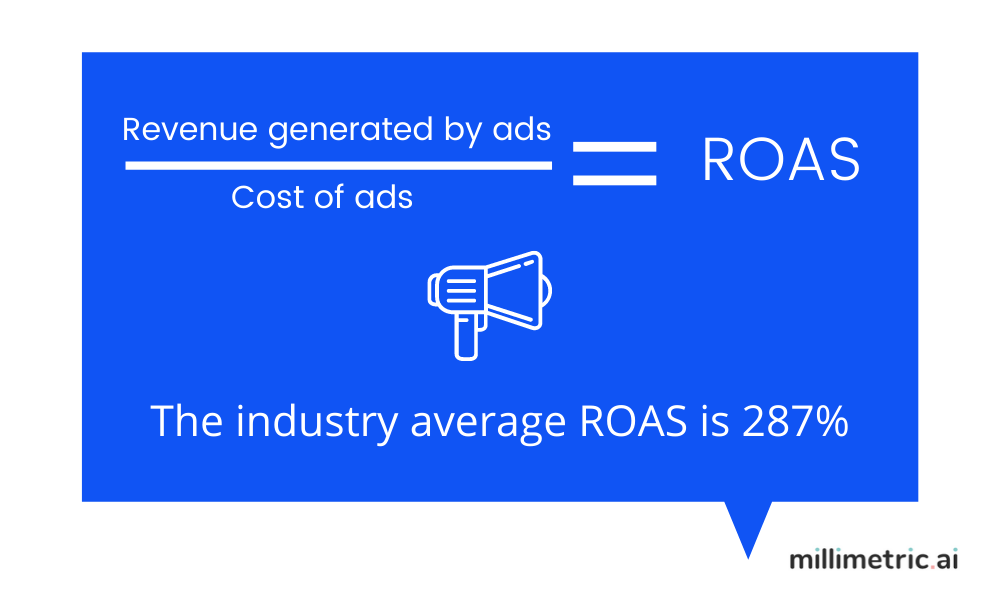
An anomaly in your ROAS signals that the cost of ads has increased, but the revenue has not. This might be down to a number of reasons:
- Your latest set of ads is not as effective as normal and needs reviewing
- Your keywords aren’t optimised
- Your quality score needs improving
- Technical issues with landing pages, ads and the website
- The ROAS isn’t accurate and you need to review your metrics and calculations to see if it’s correct
SEO anomalies
Common SEO anomalies for e-commerce include:
A drop in your pages’ ranking on search engines
Reasons for a drop in page ranking include:
- Competitors overtaking your ranking because of better SEO optimisation
- Manual penalties from search engines (this could be for a number of reasons, such as website hacking, user-generated spam and unnatural backlinks)
- Algorithm changes
- Lost links
- Your site redesign or rewrite has damaged your SEO
A decrease in the amount of organic traffic coming to your site
Less organic traffic might be reaching your site because:
- The quality of your content has decreased
- The algorithm has changed
- You’ve changed your domain name and not let Google know
- Your tracking code is wrong
- Your site host is running slowly
- Broken links or pages haven’t been removed or updated

Technical anomalies
Staying on top of technical anomalies on your e-commerce store is vital to retaining and attracting customers, in addition to maintaining your site’s SEO.
Common technical anomalies might be:
Broken links to pages
Reasons for broken links to e-commerce pages (meaning a rise in the number of 404 error messages) include:
- Links to content that’s since been deleted
- Forgetting to change internal links before renaming or moving a webpage, piece of content or image
- Typos in the URL of links
An issue with mobile compatibility
Issues with mobile compatibility would show up in your e-commerce metrics as an anomaly in the conversion rate on a specific device, and they might be because:
- Your site isn’t mobile responsive at all, or there’s been a technical issue with its mobile responsiveness
- Clickable elements aren’t optimised for touch
- Mobile navigation is unfriendly
- There are technical issues with filling out forms on mobile
- Your mobile pages are taking too long to load
High page loading times
The optimum time for a page to load is 0-4 seconds. Anything more than 4 seconds can significantly impact conversions.
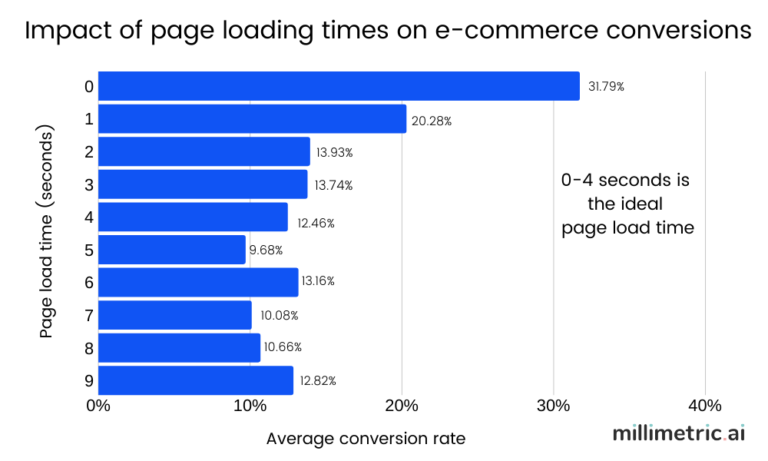
Common reasons for high page loading times include:
- A significant volume of large, high-resolution images consuming lots of bandwidth to load
- Too much flash content
- Too many HTTP requests
- Javascript issues
- Problems with your hosting provider
E-commerce anomaly in action: Here’s where, as demonstrated on our anomaly detection tool, the average load time of a website shot up to 9 seconds, 65% more than the expected time. This anomaly only lasted a day, but resulted in a significant drop in page views, and cost this e-commerce company customers and revenue. With Millimetric’s tool, the company was able to identify it quickly, however, and the anomaly was fixed after just one day.

Checkout anomalies
Issues with checking out are among the most common reasons for users to abandon their carts on e-commerce websites. According to a survey by Invesp, 11% of people who abandoned their cart did so because the website was too slow, and 5% reported it was because the website crashed.
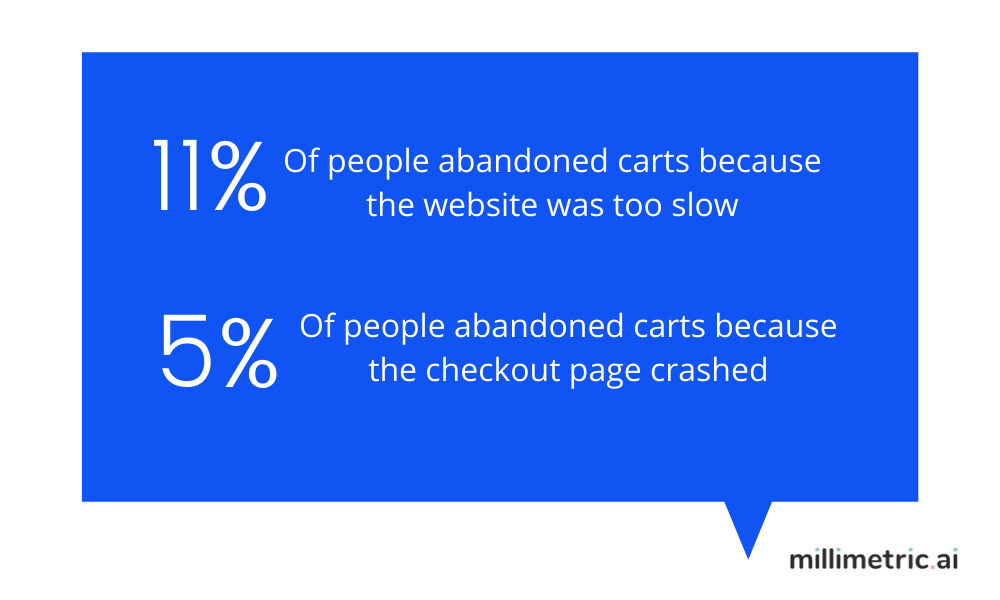
Anomalies to look out for in the checkout process include:
Issues with the payment
Common payment problems such as:
- A technical problem with the checkout form that means payments aren’t going through or the page is crashing
- The payment page is taking too long to load (and dropping payments as a result)
A high volume of customers abandoning their carts
A large proportion of customers abandoning carts is normal in e-commerce, with the average percentage of users abandoning carts sitting between 50-80% depending on the industry. But higher rates of cart abandonment than usual can signal common issues such as:
- A lower-than-normal buy-to-detail rate, which needs to be investigated
- Any technical issues with product and checkout pages
- User experience issues – often if you have too many pages, ask for too much info or the site is just too complex, more people than normal may abandon carts
E-commerce anomaly in action: Here’s where, in our anomaly detection tool, a business experienced a 59% drop in the number of checkouts for six days in a row. This was as a result of the buy-to-detail rate dropping 36%, which turned out to be because there was an error in checking out on mobile.

Driving revenue and growth using anomalies
Fully understanding all the anomalous data across your e-commerce KPIs and metrics helps businesses to prevent revenue leakage long term. This is because knowing exactly what’s going on in your data when it happens is key for making decisions that better serve you and your customers, meaning your digital shop is more competitive even in a crowded market.
It’s crucial to identify these anomalies as soon as possible before they wreak havoc on your bottom line. However, keeping on top of anomalies isn’t entirely straightforward.
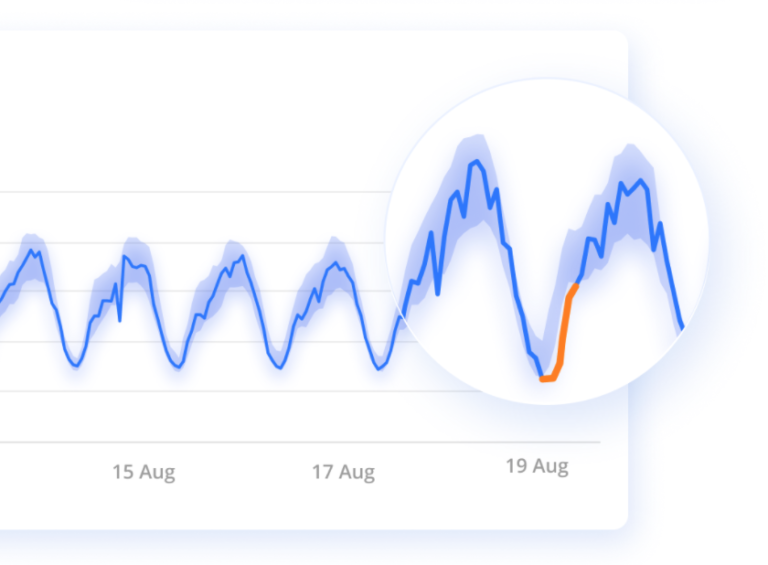
The anomalous data incidents we’ve looked at so far wouldn’t necessarily show up as a single big drop on one day, and some anomalies are much harder to identify than others.
Let’s take a look at the ways you can find anomalies in e-commerce.
Anomaly detection for e-commerce
Thoroughly and regularly checking through all datasets and dashboards will help you to identify anomalies as they happen. You can do this by first familiarising yourself with what’s within a normal range for all your metrics (and how they stand in comparison to the average for your industry) and then comparing them to your e-commerce metrics.

However, this approach to identifying anomalies is pretty time consuming, and sometimes anomalous data is harder to see. For example this graph of page loading times shows a spike on the 28th of March where the loading time was so high that payments couldn’t be processed – but it’s very easy to miss.

As a result, e-commerce businesses often invest in an analyst or a data specialist to help them uncover e-commerce anomalies like this – if they can afford it, that is.
Often, KPI dashboards and visualisation tools have in-built alert systems that will identify anomalous data in key metrics for e-commerce, Google Analytics alerts, for example. However there are still many metrics that slip through, no matter how alert and data-literate you and your team aim to be. That’s just human nature, and this is why machine learning and artificial intelligence (AI) anomaly detection for e-commerce is making waves in the e-commerce industry right now.
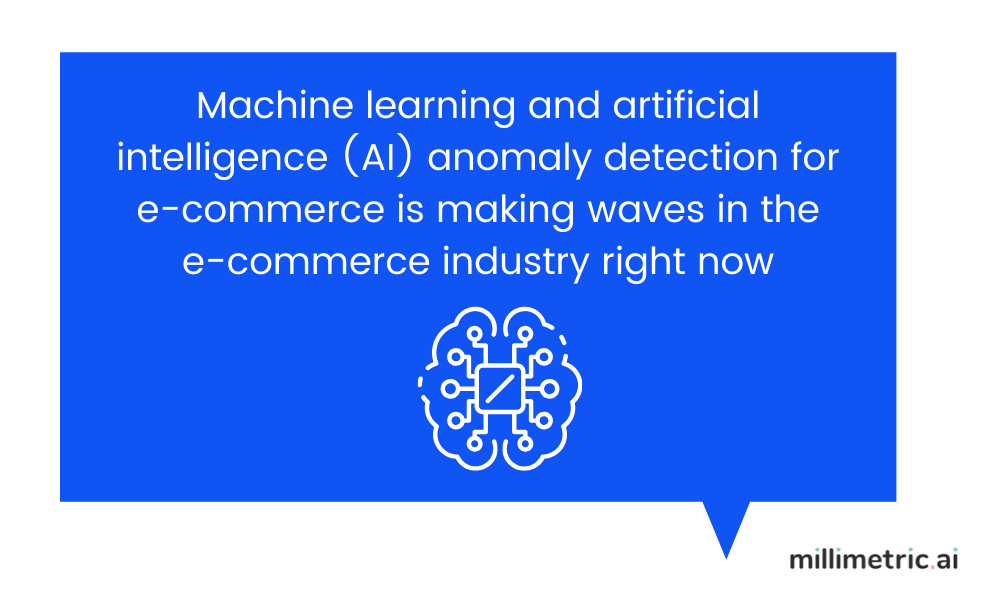
AI anomaly detection
There’s only so much data we as humans can sift through, especially when there are a hundred other business-critical things we need to focus on at the same time.
Dashboards and visualisation tools can only take you so far as well, and human error will always be a risk when businesses rely on humans to find anomalous data in the key metrics for e-commerce. But an AI tool like Millimetric’s anomaly detection platform is built to scan through datasets 24/7, identifying unusual patterns and anomalies in real-time and alerting users as soon as they appear.

Read more about the benefits of AI anomaly detection or sign up for a free trial of Millimetric’s AI anomaly detection platform.
Subscribe to receive our latest blogs